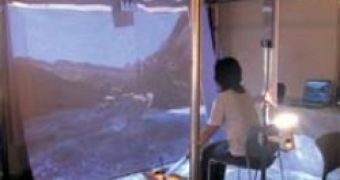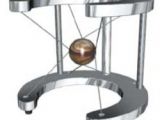You like fishing but you can't get out of town right now. You don't have the time or the money to go fishing in a remote area but you would like to spend a few quiet hours in nature, feeling the breeze and the water?
No problem. If you can't get to a mountain river to catch some trout or salmon or to practice kayaking, the Japanese will bring the mountain to you. You will even be able to feel the water without getting wet.
At Hokkaido University in Sapporo, Japan, scientists have just developed a new virtual recreation of flowing water, which you can enjoy from the comfort of your home. In fact, they've been working on two simulations, based on the same principle, one used for simulating fishing and another for kayaking.
Virtual touch technology is the latest advancement in the field, also known as virtual haptics. While visual illusions are much easier to create and to be assimilated by the brain, the tactile sense can't be easily fooled.
The fact that water in a lake forms intricate patterns is a major challenge, extremely complex mathematical formulas, the Navier-Stokes equations. Solving a complex nonlinear system of equations in real time is no easy task, but the new simulator can do it.
The control system of the device is ingenious. The virtual model approximates real-world forces acting on a fishing rod or kayak paddle by doing part of the math in advance of the simulation: the forces associated with different water velocities and different positions for the paddle or fishing lure were pre-calculated and saved in the software.
It calculates the velocity of the water in real time, as the user moves the rod or paddle during the simulation. Once the software has determined the velocity, the associated forces are applied to the user's hand.
A special device, called the Spidar G is the interface. It's like a small ball suspended by wires coming from eight different angles and attached to a metallic support surface. The user holds a stick that fits into the ball and as the simulated water flows around it to create ripples, the ball and stick ensemble move to simulate the movements of the tip of the fishing rod, exactly the way they would occur in real life.
When the player moves the stick, a virtual fishing rod or a kayak paddle will move on the screen. If the player wants even more realistic conditions, he can even play some nature sounds on his own mp3 player or he can turn on the air conditioning or a fan to simulate the breeze.

 14 DAY TRIAL //
14 DAY TRIAL // 
